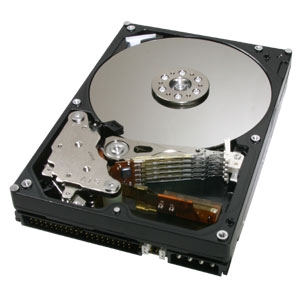S.M.A.R.T. Error: The kiss of death
 S.M.A.R.T. short for Self-
S.M.A.R.T. short for Self-
S.M.A.R.T. Error Messages:
• Status BAD, Backup and Replace
• Hard Drive Detects Imminent Failure
• Drive/controller time-
• Drive seek error
• Controller failed
• Drive sector not found error
• Write fault error
• Drive track 0 error
• Head select error
• Error Correction Code (ECC) error
• Sector buffer overrun
• Bad address mark
• Internal controller diagnostics failure
• Data compare error
• Drive not ready
• Track 0 indicator failure
• Diagnostics cylinder errors
• Surface read errors
• Hard drive type error
• Bad diagnostics cylinder
• Data compare error
• Controller error
• BIOS undefined error return
• Bad command error
• Data corrected error
• Bad track error
• Bad sector error
• Bad initialization error
• Bad sense error
• Drive verify failure
• Drive read failure
• Drive write failure
• Drive random read test failure
• Drive seek test failure
• Controller failure
• Controller Error Correction Code (ECC) test failure
• Controller head select failure
• Seek failure; drive 0
• Seek failure; drive 1
• Controller test failure
• Diagnostic cylinder read error; drive 0
• Diagnostic cylinder read error; drive 1
What Causes a Drive to Give These S.M.A.R.T. Messages?
• A known mechanical part is currently failing: spinning mechanisms, head movement, etc.
• Major defects on the disk’s platter(s) (Known as bad sectors)
• Electronic failure in the circuitry.
What To Do about S.M.A.R.T. Errors:
• If the drive is working, don’t waste any time getting data off of the drive onto to another media source, IMMEDIATELY!
• If the drive is not working and you hearing noises, turn off your system immediately and call for professional help to recover your data.
• In the end, you will need a new hard drive to replace the existing. S.M.A.R.T. errors are permanent errors and will not self-
Worse Case:
• If your drive is beyond recovery that files are not retrievable, you may want to send the drive to a recovery specialist such as datarecovery.com. Remember the first attempt to recovering data is the best attempt.
• If you did manage to get the data backed up to another medium (DVD, CD, external hard drive, or flash drive) then relax. All you need to do is replace your existing hard drive with a new Seagate brand hard drive. Seagate is the industry leader at this time with superior warranties and technical support. So when you choose your next hard drive, go with a Seagate hard drive.
While S.M.A.R.T. attempts to give you a predicted warning of failure, it may not give you the time you need to backup your data inevitably. In our (RCCS) experience we have found that some SMART crashes are not conventionally recoverable. This is why it is a great idea to always have the data on a computer backed up periodically to another source other than the hard drive inside the computer.




